Past Exhibition
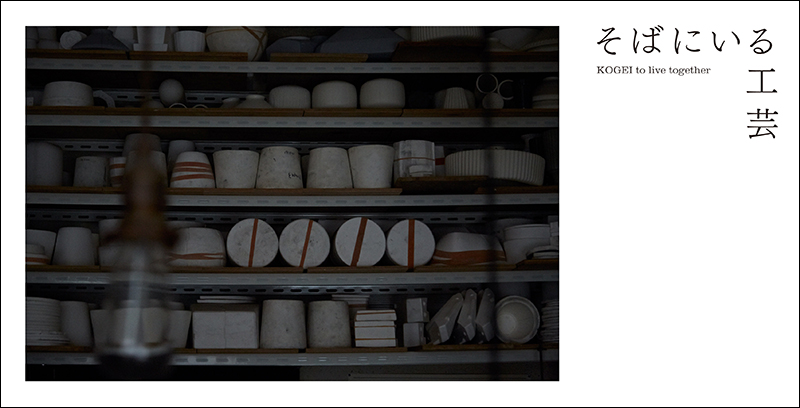
The Shiseido Gallery is pleased to announce the opening of the exhibition, KOGEI to live together, to run from September 6th (Tue) through October 25th (Tue), 2016.
The Shiseido Gallery opened its doors in 1919 with our corporate mission “We inspire a life of beauty and culture.” From the very beginning the Gallery took notice of the role that “kogei” (craftworks and craftsmanship) can play in enriching our lives, and these have been featured along with the fine arts in countless Shiseido Gallery exhibitions over the decades. From solo shows by potters and lacquer artisans to exhibitions of fine art crafts from abroad to group shows designed to promote the development of Japanese “kogei”, the Shiseido Gallery has long been involved in sponsoring opportunities to highlight “kogei”s in the public eye.
The “Modern Kogei Exhibition,” a series of regular exhibitions between 1975 and 1995 featuring “kogei” artists from various genres, became a central pillar of Shiseido's exhibition activities, its stature very much on par with the Gallery's “Tsubakikai” fine arts exhibitions. The “life/art” exhibition series that ran from 2001 through 2005 carried on with the original objectives of those earlier craft exhibitions, but with an updated, more contemporary approach that aimed to discover “new relationships between life and the arts.” Such efforts have become a mainstay of the Shiseido Gallery's involvement with the world of craft.
Our lives these days are filled with so many material goods, and so much information overload, that there is a growing movement of people looking to shift back to simpler lifestyles closer to nature. There is something appealing about the idea of taking more care in choosing, using, and appreciating the utilitarian objects that populate our everyday lives. It is also true that Japanese crafts have been garnering more attention than ever abroad, appreciated not only for their technical excellence, but also for their earnest devotion to materials and their minimalist aesthetic.
This exhibition is devoted to those kinds of crafts that are there with us, often quite unobtrusively, in our everyday lives. To select the six artists presented here, the Shiseido Gallery enlisted the collaboration of Yukiyoshi Morioka, director of the Morioka Shoten book shop, who helped to select artisans from the theme of “dining” and “living”. The featured artisans include Naho Kamata (metal), Takeo Kawabata (wood), Hirotaka Tobimatsu (porcelain lightware), Wataru Hatano (Kurotani Japanese paper), Peter Ivy (glass), and Kazumi Yoshimura (pottery). Their creations are humble—spoons and forks, lamps, boxes, glass vessels, bowls, and so on—but the deep attention to usability and detail even amidst such outward simplicity gives these items an intrinsic beauty of which their users must surely, if subtly, become aware.
Each of the six artisans will present a number of pieces, some of them newly created for this exhibition. Video presentations throughout will show these artists at work in their respective studios to give some glimpse of the processes and environments from which such craftsmanship and creativity emerge.
Such works do not necessarily put themselves forward so strongly, but there is something palpable in their presence, and in the essence of richness that they bring to everyday life.
Collaborator: Yoshiyuki Morioka
Born in 1974. Director of Morioka Shoten & Co., Ltd. under the motto “a single room with a single book.” Morioka's own works include Photo Album—108 Books You Want to Give to Others (Heibonsha); Books on Japan 1931-1972: Japan's International Propaganda (PNN Shinsha); and A Bookshop in the Wilds (Shobunsha). He contributes articles for the opening page of Geijutsu Shincho and is on the editorial board for Kogei Seika magazine published by Shinchosha. In 2015 Morioka held an event called “The Morioka Department Store” at the Mitsukoshi, Nihonbashi. In 2016 he exhibited in the “Zakka” exhibition held at 21_21 Design Sight.
■Exhibitor Profiles
| Naho Kamata (metal) |
Born in 1982 in Kumamoto prefecture. After graduating from high school Kamata studied oil painting at a preparatory school in Tokyo, and during that period she also developed a fascination with ancient tools. A little later she discovered the metal works of artisan Takejiro Hasegawa, with whom she then apprenticed from 2005 to 2008 in Nagoya. In 2008 she became independent and relocated to Tokyo. Selected major exhibitions have included: muslin at Morioka Books in 2010 (her first solo show); vent at Gallery SU in 2011; tocoro ten at Tocoro Cafe in 2012; Naho Kamata at Hibi in 2013; Scenery at Gallery SU in 2014; Metalworks by Naho Kamata at Hase in 2014; Metal Repair at Pragmata in 2015; and Naho Kamata Solo at Hibi in 2015. |
|---|---|
| Takeo Kawabata (wood) |
Born in 1971 in Osaka prefecture. Having graduated from the forestry department of Tokyo University of Agriculture, Kawabata joined an agricultural organization and spent the next four years working the earth as a farmer. Eventually he enrolled in a woodworking course at the Adachi Technical School, then studied under woodworker Akihiko Kiuchi. In 2003 he discovered an old wooden schoolhouse on a hill in rural Koga and converted it into a workshop where he began crafting wooden furniture. In 2004 he refurbished the schoolhouse and started a combined confectionary workshop “ManmaMia” (now “patisserie MiA”) and gallery space. From 2006, with the birth of his first child, he started smaller creative projects including cutlery, platters, and other common household wares. Now he spends his days carving wood, continually inspired by nature around him. |
| Hirotaka Tobimatsu (porcelain lightware) |
Born in 1980 in Saga prefecture, currently lives in Tokyo. Tobimatsu graduated from the Ceramics program at Tama Art University, and taking advantage of his school experience with molded forms, he began creating clay vessels using various casting techniques. After studying for a time with potter Machiko Ogawa he became independent, and his main efforts now center around producing molded porcelains under the name “tobimatsu TOKI.” Having noticed certain translucent qualities inherent in porcelain as a material, he has been developing a line of porcelain lamp shades created by adjusting the translucency of the base kaolin. Tobimatsu is fascinated by the early 20th century “milk glass” lamp shades once so popular before the advent of fluorescents, and he has been applying his craft to renew our cultural valuation of these and explore new options for illumination in our modern lives. His lamp shades include the “fin” series, which highlights the unique shading patterns inherent in porcelain, and the simple “odd line” series, in which he leaves the finished pieces with the burrs formed by the gypsum molds during the casting process. Tobimatsu's studio is a live/work space converted from an old single-family home, and he hosts open-studio events there several times a year. |
| Wataru Hatano (Kurotani Japanese paper) |
Graduated from the oil painting department of Tama Art University in 1995. In 1997 Hatano began training as a traditional Japanese papermaker in the “Kurotani washi” style, and by 2000 he had established himself as an independent artisan in that field. While building his career as a papermaker, he has begun utilizing his own paper as a medium upon which to continue the painting he learned during his university days. He also spends his time exploring the use of Japanese paper as an interior decorating material and in other contemporary applications. |
| Peter Ivy (glass) |
Born in Alabama, USA in 1969. In 1970 Ivy's musician parents moved the family to Austin, Texas, famous for its music scene. In 2002 Ivy moved to Japan “wanting to experience something beyond my imagination.” He took a position as lecturer and associate professor teaching glassworking in the art department of Aichi University of Education. In 2007 he stopped teaching and relocated to Toyama prefecture, where he built a small studio. In addition to his own work, in 2013 he began working with stylist Midori Takahashi to design a line of bowls under the name “KOBO.” As of 2016, he is in the process of refurbishing his studio. |
| Kazumi Yoshimura (Potter) |
Born in Ibaraki prefecture in 1975. Yoshimura graduated from the painting program at Musashino Arts University, then began working with pottery in the town of Mashiko in Tochigi prefecture. In 2002 he constructed his own kiln in the city of Tsukuba in Ibaraki prefecture, then in 2009 returned to Mashiko. |
■Photo of works
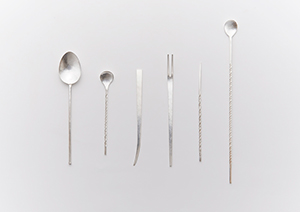
Works to be exhibited
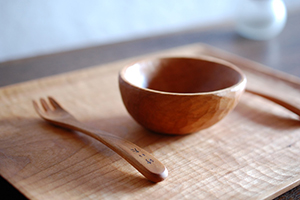
Reference
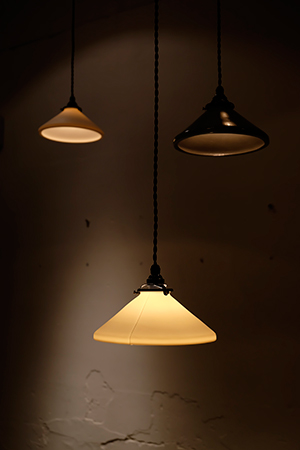
Works to be exhibited
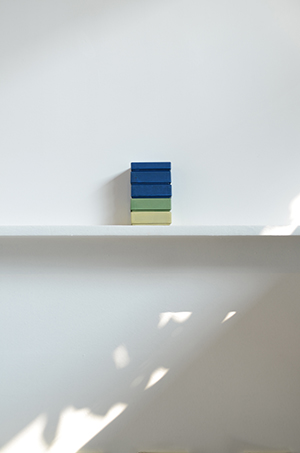
Reference
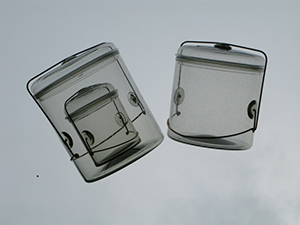
Works to be exhibited

Reference
Photo by Bungo Kimura
■Exhibition Details for KOGEI to live together
| Organized by Shiseido Co., Ltd. | |
| Planning Collaboration: | Yoshiyuki Morioka |
| Space design: | 51% (5wari1bu) Movie : Rui Shimamoto & Woomin Gen |
| Duration: | September 9th (Tue) to October 25th (Tue), 2016 |
| Location: |
The Shiseido Gallery Tokyo Ginza Shiseido Building, B1, 8-8-3 Ginza, Chuo-ku, Tokyo 104-0061 Tel:03-3572-3901; Fax:03-3572-3951 |
| Hours: |
Weekdays: 11:00 AM - 7:00 PM, Sundays and National Holidays: 11:00 AM - 6:00 PM Closed on Mondays (including public holidays) |
| Admission is free | |